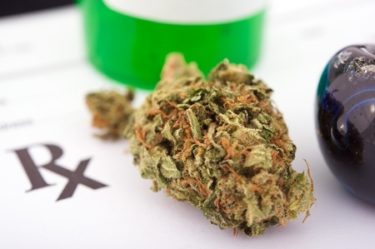
Medical marijuana is back up for debate in the North Carolina General Assembly with the introduction of H.B. 185, “Legalize Medical Marijuana,” filed this session by Rep. Kelly Alexander (D–Mecklenburg) and others. All previous attempts to pass legislation legalizing medical marijuana in North Carolina have been unsuccessful.
National headlines have also brought the subject of marijuana to the foreground. Recently, U.S. Attorney General Jeff Sessions stated that, “…it does remain a violation of federal law to distribute marijuana throughout any place in the United States, whether a state legalizes it or not.” White House spokesperson Sean Spicer has also suggested there will be “greater enforcement” of federal law relating to marijuana.
The federal government classifies marijuana as a Schedule 1 controlled substance under the Controlled Substances Act. According to the Act, this classification is based on three factors: 1) its “high potential for abuse;” 2) it “has no currently acceptable medical use in treatment in the United States;” and 3) “there is a lack of accepted safety for use of the drug or other substance under medical supervision.”
With medical and recreational marijuana legalization on the rise in states across the country, North Carolinians must be armed with the latest facts on the dangers of legalizing the potent drug.
Medical marijuana poses health risks. Dr. Michelle Cretella, President of the American College of Pediatricians, explains in a November 2016 Family Policy Matters radio interview with NC Family President John L. Rustin that the strains of marijuana used today are “three to five times stronger” than marijuana available in recent decades. Dr. Cretella also outlines that short-term use of marijuana can impair judgment, cause a person to be disoriented, and decrease reflexes. In the long-term, marijuana use can lower a person’s IQ and even instigate mental illness, among other serious side effects.
Medical marijuana proponents often argue the drug is necessary to help the chronically ill and those suffering from deadly illnesses. However, Dr. Kevin Sabet explains in another interview with NC Family that medical marijuana users who are chronically ill and coping with deadly illnesses only make up roughly 2 percent of all medical marijuana users.
Recent research by the National Academies of Science, Engineering, and Medicine (NASEM) suggests that there is “potential therapeutic value for cannabinoid drugs” and recommends continued research. However, in a review of the NASEM report, the National Institute for Drug Abuse (NIDA) additionally warns that there must be a clear distinction made between the use of certain cannabinoid chemicals for medical purposes and smoking the cannabis plant. While the NASEM report suggests that certain cannabinoid chemicals could relieve pain in some instances, the research conducted on the subject has many limitations according to NIDA. What is clear is that smoking medical marijuana does in fact pose many health risks that far outweigh any immediate relief the drug might bring.
Medical marijuana endangers youth. The risks associated with marijuana use among youth should be of great concern since adolescent use of the drug can cause “abnormal and unhealthy changes” while the brain is still developing, according to Dr. Seth D. Ammerman with the American Academy of Pediatrics. Risks associated with youth use of marijuana include depression, psychosis, “dulled sensory awareness” and reaction time, which can lead to serious accidents. Additionally, marijuana can decrease lung functionality and can cause severe learning problems. Dr. Cretella says the danger the drug poses for youth is the “greatest risk” of legalizing medical marijuana.
In a recent Smart Approaches to Marijuana (SAM) report examining the effects of marijuana legalization, findings show that youth use of marijuana in states where marijuana is legal far exceed that in states where it is illegal, with Colorado as the state with the highest ranking for youth marijuana use.
Legalizing medical marijuana not only increases its availability to youth, but it also sends a message that using the drug can be “good” for you, when in fact the drug is a Schedule 1 controlled substance (as mentioned above). The American Academy of Pediatrics released an important report in February 2017 that serves as a call to action about the harms of marijuana use, specifically by youth. The report states that, “…changes in the legal status of marijuana, even if limited to adults, may affect use among adolescents by decreasing the perceived risk of harm.…”
Medical marijuana is the forerunner for full legalization. Currently, medical marijuana is legal in 28 states, as well as the District of Columbia, Guam, and Puerto Rico. In all nine states in which recreational marijuana is fully legal, medical marijuana was legalized first, demonstrating that legalizing medical marijuana is the first step in full legalization of the drug.
Legalizing marijuana for various uses will likely remain a topic in current events for the foreseeable future. It is vital that North Carolinians stay informed on the dangers of legalizing the drug, educate youth on its grave harms, and lobby elected officials to vote against any form of marijuana legalization.
For more information about the risks of marijuana legalization, see our article, “Bad ‘Medicine,’ Wrong Policy: Red Flags from Colorado’s Marijuana Experiment,” which was published in the in the Spring 2015 edition of Family North Carolina magazine.